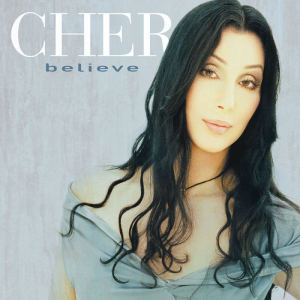Cher’s Believe album retrospectively reviewed: ‘The title track deserves its own think piece’
"Ditching rock for polished radio-and-club-ready jams via a Madonna-style makeover, Cher reached her commercial peak", writes Joseph Ryan-Hicks

As pop icons go, they don’t come much more legendary than Cher. The singer/actress has arguably had more reinventions than a certain other Queen of Pop, from folk-pop songstress to disco diva to power-ballad rock star. But in 1998, a 52-year-old Cher underwent her most inspired and commercially successful transformation to date. After lacklustre sales of her previous LP, 1995’s It’s a Man’s World, the singer was advised to ditch rock in favour of a trendier dance sound. The result, 1998’s Believe, would be a game-changer for Cher, and indeed pop, forevermore.
Initially put off by the idea of recording a dance track, Cher was eventually persuaded otherwise and set to work on what would be her 22nd album in the summer of 1998. The album’s production and songwriting credits are bursting with pop royalty, including producer Brian Higgins (Girls Aloud, Sugababes) and songwriter Diane Warren (Beyoncé, Mariah Carey). The result was a polished collection of radio-friendly and club-ready jams, echoing the European-influenced sound that dominated the charts in the late 1990s.

Lead single and title track ‘Believe’ deserves its own think-piece, frankly. The Eurodance number, co-written by Cher, was recorded in London mere months before it was released in late 1998. Lyrically, the track starts by exploring the emotional obstacles of a breakup, before culminating in a renewed sense of self-worth by the final verse. The switch-up from emotionally distressed to empowered was at Cher’s own request, who found the original lyrics too “whiny”. (An early demo from 1991 is available to stream on YouTube and is a fascinating insight into what might have been.) Cher’s lyrical contribution, written while in the bathtub of course, is a highlight: “I need time to move on / I need a love to feel strong /’Cos I’ve had time to think it through / And maybe I’m too good for you”.
“Believe reached number one pretty much everywhere it charted”
‘Believe’ is one of those rare pop hits that triggered a cultural shift in music. Think ‘…Baby One More Time’ by Britney Spears or ‘Bad Romance’ by Lady Gaga. It was an international smash upon release, reaching number one pretty much everywhere it charted. Cher’s infamous use of autotune, a pitch-correction tool with the ability to make the voice sound almost robotic, would have a huge impact on music thereafter. The likes of Madonna, Rihanna and Kesha — not to mention countless rappers, too — would go on to use autotune to give their vocals a similar futuristic texture. This would be dubbed the ‘Cher effect’.

The remaining nine tracks of the album tread similar territory to ‘Believe’. Second single ‘Strong Enough’ is an ‘I Will Survive’-esque disco stomper. Lyrically, the track sees Cher confronting a cheating lover and realising she’s better off without them: “No matter what I hear you say / I’m strong enough / To know / You gotta go”. It was another big hit for Cher, reaching the Top 10 in most countries. Where the previous two singles were empowered dance-floor fillers, third single ‘All or Nothing’ delves more into the heartbreak. Sonically, it’s a spiritual successor to the first single with its thumping beat and autotuned vocals. It’s a beautifully melancholy moment on the album, in the ilk of Robyn’s ‘Dancing on My Own’. Fourth and final single ‘Dov’è l’amore’ (which translates to ‘Where’s [the] Love?’) taps into the Latin-infused sound that was slowly creeping into the charts — it just about predates Ricky Martin’s ‘Livin’ la Vida Loca’ and J.Lo’s ‘Let’s Get Loud’. It’s a perfect example of how the album captured the zeitgeist of popular music at the time, firmly placing Cher next to much younger pop contemporaries.
Other gems on the album include the trancey ‘Taxi Taxi’ and a bouncy remix of Cher’s own ‘We All Sleep Alone’, originally released on her 1987 self-titled album. The latter, a soft-rock power ballad in its first incarnation, makes perfect sense in this regenerated form. The melodrama of the original lends itself brilliantly to this Eurodance makeover.
Believe is undeniably a ‘queer classic’. Long before allyship was a given in pop stars, Cher was speaking up for the LGBTQ+ community. This album feels very much like a love letter to queer culture and especially its club scene at the time. Its sound and themes of overcoming hardship are what helped it resonate so deeply with LGBTQ+ people. The lead single alone was an immediate hit among the community and is still played in gay clubs across the world. In 2020, Cher described her first experience of seeing a gay man as “love at first sight”, and that love and respect has only deepened ever since.
